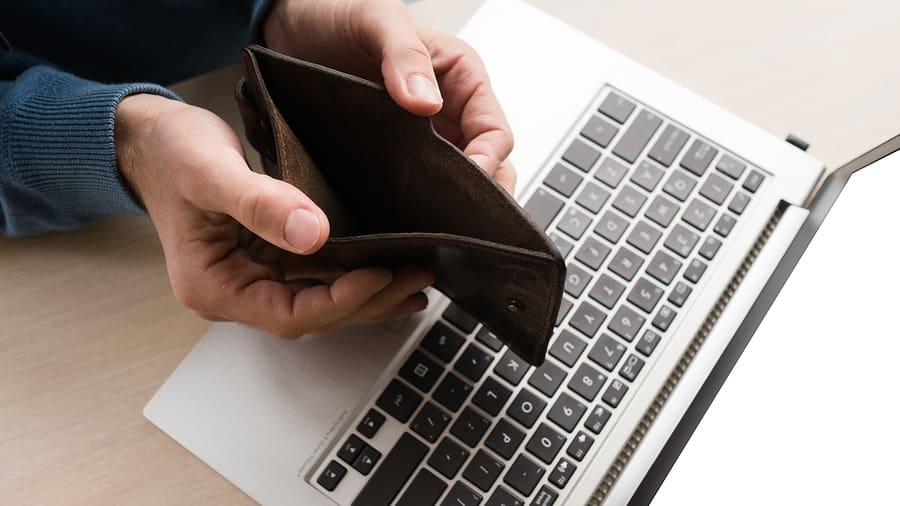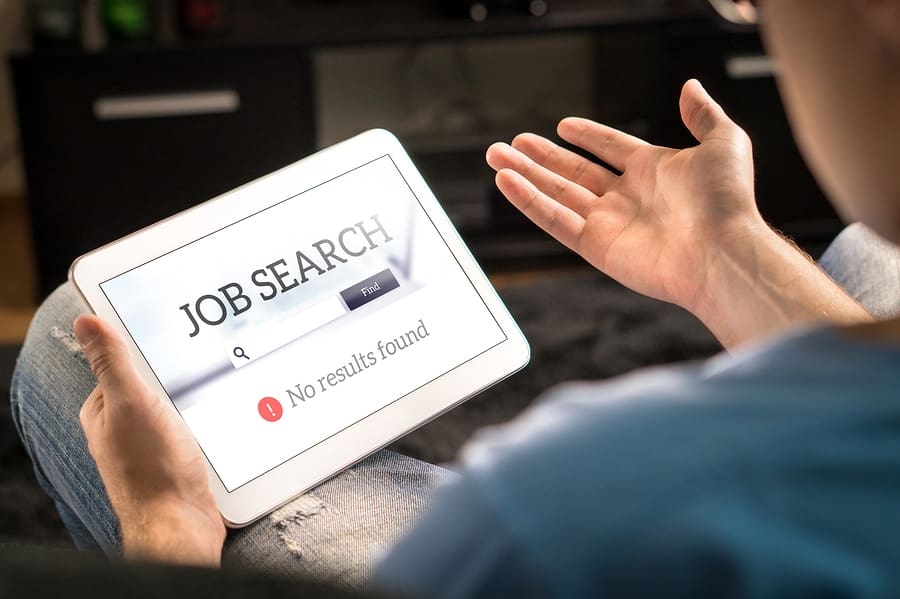An unexpected job loss can be devastating. If this happens to you, don’t panic. You may immediately think using your credit cards to sustain your current level of living is what you need to do until you get a new job. There is a better plan if you're unemployed with student loans.
Not only do you need to avoid going into more debt, but you also need to prevent delinquency or default on existing debt, like your student loans.
Let’s take a look at several repayment options and how to use those to your advantage after becoming unemployed with student loans.
Types of Student Loan Repayment Options You Should Know

Student loan repayment plan options vary by the type of loan and the servicer. Federal student loans and private student loans may use similar terms to describe their repayment plans, but read the fine print because some of the same terminologies mean different things to different lenders.
Not only might the meaning of deferment and forbearance differ among lenders, but some private student loan lenders do not offer these options to borrowers.
Deferment
Student loan deferment is a way to temporarily stop making a required payment that does not negatively affect your student loan account. Federal student loans allow you to place your loans on a moratorium for up to three years while you are unable to find full-time employment. However, some types of federal student loans hold you responsible for the interest that accrues during deferment. When considering this option for your federal student loans, confirm if this applies to you by contacting your student loan servicer.
A deferment with a private student loan lender is a temporary postponement of payments. That is where the similarities end. If your private student loan lender offers this option, you may be required to be enrolled in school at least half-time to be eligible.
Forbearance
Student loan forbearance has additional limitations compared to deferment but is also a way to temporarily stop making required student loan payments. The time limitations that are covered for a forbearance vary by the type of Federal Student Loan.
A general forbearance, also known as a discretionary forbearance, is considered in cases like financial instability and job loss.
Federal Student Loans Eligible for Forbearance
William D. Ford Federal Direct Loan (Direct Loan) Program Loans
- Direct Subsidized Loans
- Direct Unsubsidized Loans
- Direct Plus Loans
- Direct Consolidation Loans
Federal Family Education Loan (FFEL) Program Loans
- Subsidized Loans
- Unsubsidized Loans
- Plus Loans
- Consolidation Loans
Federal Perkins Loan Program (Perkins Loan)
General forbearances are limited to 12 months at a time. If you need more time to resolve your financial situation, you may submit another request for forbearance to your servicer. Perkins Loan borrowers are limited to a cumulative three years of forbearance. Direct Loans and FFEL limits are set by your loan servicer.
A forbearance with a Private Student Loan lender is a way to postpone loan payments for a specified period. Lenders typically consider unemployment, economic hardship, or excessive student loan burden as viable reasons for granting a forbearance.
Income-Driven Repayment (IDR)
Under the Federal Student Loan program, IDR plans adjust your monthly repayment amount based on your family size and household income and are recommended for borrowers who may have trouble repaying their student loans over the long term.
There are a few IDR plans available, depending on the type of federal student loan you have and eligibility requirements:
- Saving on a Valuable Education (SAVE) — formerly REPAYE
- Pay As You Earn Repayment Plan (PAYE)
- Income-Based Repayment Plan (IBR)
- Income-Contingent Repayment Plan (ICR)
Annual recertification of income is required for continued eligibility under an IDR plan.
Graduated Repayment
Another Federal Student Loan repayment plan that allows lower payments followed by increasing payments based on income. You’ll need to re-apply for this program every two years or as directed by the servicer. All Federal Student Loan borrowers are at least initially eligible for this plan.
Extended Repayment
For this Federal Student Loan repayment plan, payments are adjusted to guarantee that the loan is paid off within 25 years. What this means is that at certain points during the life of the loan, the payments can be fixed or graduated.
Hardship Repayment
This term is sometimes used by private student Loan lenders. While the details may vary, borrowers may be able to temporarily reduce the interest rate on the loan, resulting in lower minimum monthly payments.
Reduced Payment
Similar to a Hardship Repayment, the minimum monthly payment is reduced. The difference here is that the borrower usually cannot be more than 60 days delinquent on the loan. This is why it’s important to contact your student loan servicer as soon as possible after a job loss.
Early Repayment Assistance Programs
This is another option for some Private Student Loan borrowers. Some private student loan lenders allow up to a three-month postponement of payment within the first three months of the repayment period.
If you lose your job around the time you are scheduled to go into repayment on your private student loan, this may be an option.
These are just some of the options to help you manage student loan payments after a job loss. Your student loan servicer may have additional ways to assist you with repayment that are not mentioned here.
6 Steps to Handle Your Payments When You're Unemployed With Student Loans

As soon as you take a deep breath, assess your possible options, and realize you have to take massive action-it’s time to put together a game plan.
The steps you take from this point forward will help determine your ability to manage student loan payments over the next several months.
1. Contact Your Student Loan Servicer
As a preemptive step, do your research first. Scour your student loan servicer’s website to find what kind of information they’ve posted for borrowers having trouble making their payments, so you go into the conversation with your servicer with as much information as possible.
Next, contact your Federal Student Loan or Private Loan servicer to let them know that you no longer have a job.
- Here is a short list of documents and information you should have on hand when you make the call:
- When you made your last payment
- The date you became unemployed
- How long you anticipate being unemployed
- Current total monthly household income
- A short list of actions you’ve taken to seek employment
- The names of one or two programs that might fit your situation based on your research
They will likely provide you with deferment, forbearance, or hardship repayment options. Before making a decision on how to proceed, try talking another representative at your student loan servicing company to make sure you’re receiving consistent, factual information.
2. Adjust Other Monthly Payments
Scale back on any principal payments toward your mortgage and any extra money you were paying toward other credit-bearing accounts. If you’re paying an additional $50 a month to pay off your other debt quickly, now’s the time to make minimum payments.
Better yet, contact your mortgage lender and credit card company and let them know of your unemployment status so payment adjustments can be made there as well. They may have temporary payment relief options that you can take advantage of during this time.
3. Cut Out Non-Essential Expenses
You will need to re-examine your current budget and suspend non-essential services. What remains should be a list of essential items that could include:
- Mortgage/rent
- Utilities
- Transportation (car loan payments)
- Car Insurance
- Health Insurance
- Groceries
Consider downgrading your cell phone data plan, drop your cable service, subscription and membership packages, nix eating out for the next several months, and of course, put a pause on entertainment expenses.
4. Cancel Or Return Recently Purchased Items
Evaluate your recent purchases and see which ones are within their return grace period. Ideally, you’re looking for items that you can return for cash or that can be credited back to your credit card, not returned for store credit.
5. Sell Your Stuff to Make Student Loan Payments
You want to think about big ticket items here. Sell things you’re currently making payments on. This could be your car, boat or another item you recently financed. Be careful, since this will only make sense if you are able to receive more than the amount owed on the item.
Review your finance terms in full before selling. You want to limit any potential fees, penalties or finance charges triggered by paying off the financed item early. If you’re ready to sell, you can use Facebook Marketplace, LetGo, or Craigslist to get the best return.
6. Hustle For Your Student Loan Payments
Start a side hustle to help make student loan payments after losing your job. Delivery services, tutoring, dog walking, and participating in focus groups are just a few ways to earn while you’re looking for full-time employment.
The great thing about side hustles is that you don’t have to wait weeks to be hired by an employer. You can have a new source of income in less than a week.
Losing a Job Is Rough, But You’ll Get Through It
Being unemployed with student loans doesn't have to be detrimental. You can manage your student loan payments after losing your job as long as you consider all of your options. After you start your new job, be sure to establish an emergency fund if you don’t already have one.
Specifically set aside money in case of unexpected repairs, accidents, or even another job loss. Many financial professionals recommend 3 to 6 months living expenses be placed in a high-interest savings account.
If this sounds overwhelming, start small. Consider saving 2 percent of your income each month to get started. While you’re building your emergency fund account, keep your non-essential expenses at bay. Since we never know when a job loss can occur, it’s best to be as prepared as we can for the future.
Your alma mater’s financial aid and career services office may also provide additional resources and options worth pursuing. Borrowers can gain control of the situation quickly by sharing their situation with others. Doing so could open up opportunities you didn’t know existed and have you employed before you know it.
Have you ever been unemployed and burdened by student loan debt? Which one of these options has been most helpful to you when coping with student loan payments?
Refinance student loans, get a bonus in 2025
| Lender Name | Lender | Offer | Learn more |
|---|---|---|---|

|
$500 Bonus
For refinancing 100k or more (bonus from Student Loan Planner®, not SoFi®)
|
Fixed 4.49 - 9.99% APR
Variable 5.99 - 9.99% APR with all discounts with all discounts |
|

|
$1,000 Bonus
For 100k or more. $200 for 50k to $99,999
|
Fixed 4.45 - 10:49% APR
Variable 5.88 - 10.49% APR
|
|

|
$1,000 Bonus
For 100k or more. $300 for 50k to $99,999
|
Fixed 4.29 - 10.24% APPR
Variable 4.86 - 10.24% APR
|
|

|
$1,050 Bonus
For 100k+, $300 for 50k to 99k.
|
Fixed 4.99 - 8.90% APR
Variable 5.29 - 9.20% APR
|
|

|
$1,099 Bonus
For 150k+, $300 to $500 for 50k to 149k.
|
Fixed 4.88 - 8.44% APR
Variable 4.86 - 8.24% APR
|
|

|
$1,250 Bonus
For 100k+, $350 for 50k to 100k. $100 for 5k to 50k
|
Fixed 3.85 - 11.38% APR
Variable 4.33 - 12.35% APR with autopay with autopay |
Not sure what to do with your student loans?
Take our 11-question quiz to get a personalized recommendation for 2025 on whether you should pursue PSLF, SAVE or another IDR plan, or refinancing (including the one lender we think could give you the best rate).

Comments are closed.